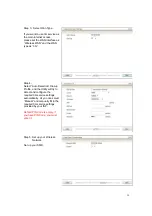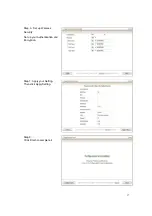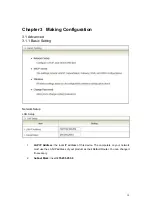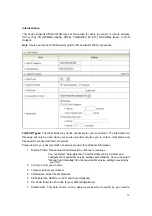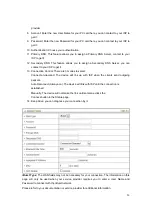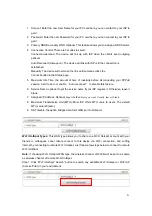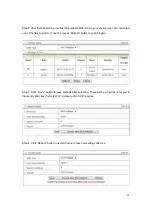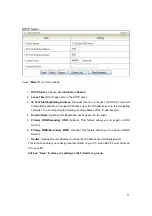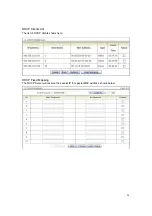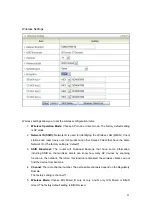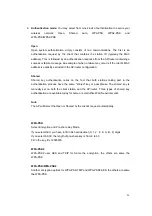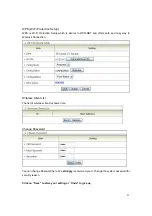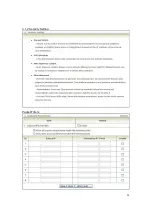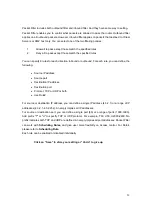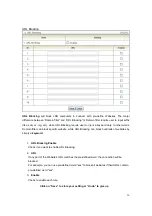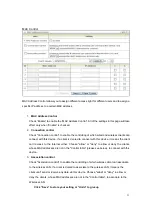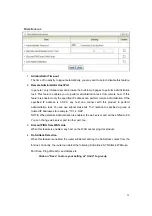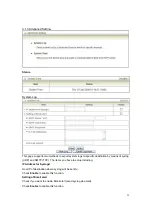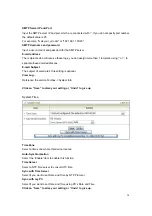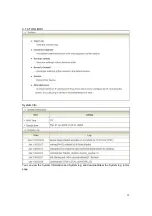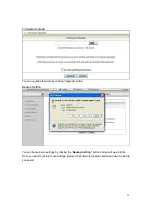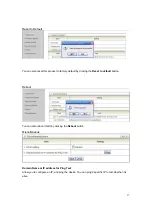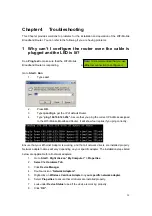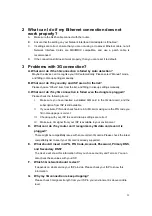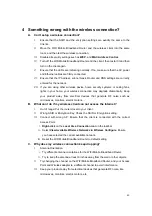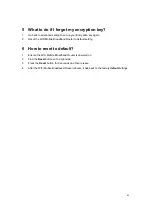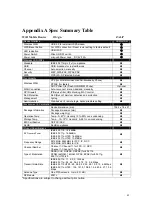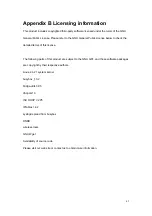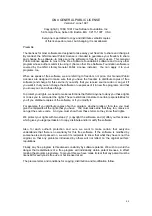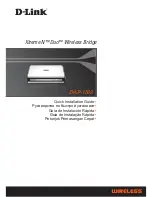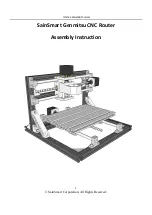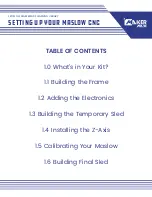
29
Packet Filter includes both outbound filter and inbound filter. And they have same way to setting.
Packet Filter enables you to control what packets are allowed to pass the router. Outbound filter
applies on all outbound packets. However, inbound filter applies on packets that destined to Virtual
Servers or DMZ host only. You can select one of the two filtering policies:
1.
Allow all to pass except those match the specified rules
2.
Deny all to pass except those match the specified rules
You can specify 8 rules for each direction: inbound or outbound. For each rule, you can define the
following:
x
Source IP
address
x
Source port
x
Destination IP address
x
Destination
port
x
Protocol: TCP or UDP or both.
x
Use
Rule#
For source or destination IP address, you can define a single IP address (4.3.2.1) or a range of IP
addresses (4.3.2.1-4.3.2.254). An empty implies all IP addresses.
For source or destination port, you can define a single port (80) or a range of ports (1000-1999).
Add prefix "T" or "U" to specify TCP or UDP protocol. For example, T80, U53, U2000-2999, No
prefix indicates both TCP and UDP are defined. An empty implies all port addresses. Packet Filter
can work with
Scheduling Rules,
and give user more flexibility on Access control. For Detail,
please refer to
Scheduling Rule.
Each rule can be enabled or disabled individually.
Click on “Save” to store your setting or “Undo” to give up
Summary of Contents for CDM531
Page 1: ...1 CDM531AM WiFi Mobile Router ZALiP User Manual...
Page 28: ...28 3 1 2 Security Setting Packet Filters...
Page 48: ...48 END OF TERMS AND CONDITIONS...
Page 49: ......


